-
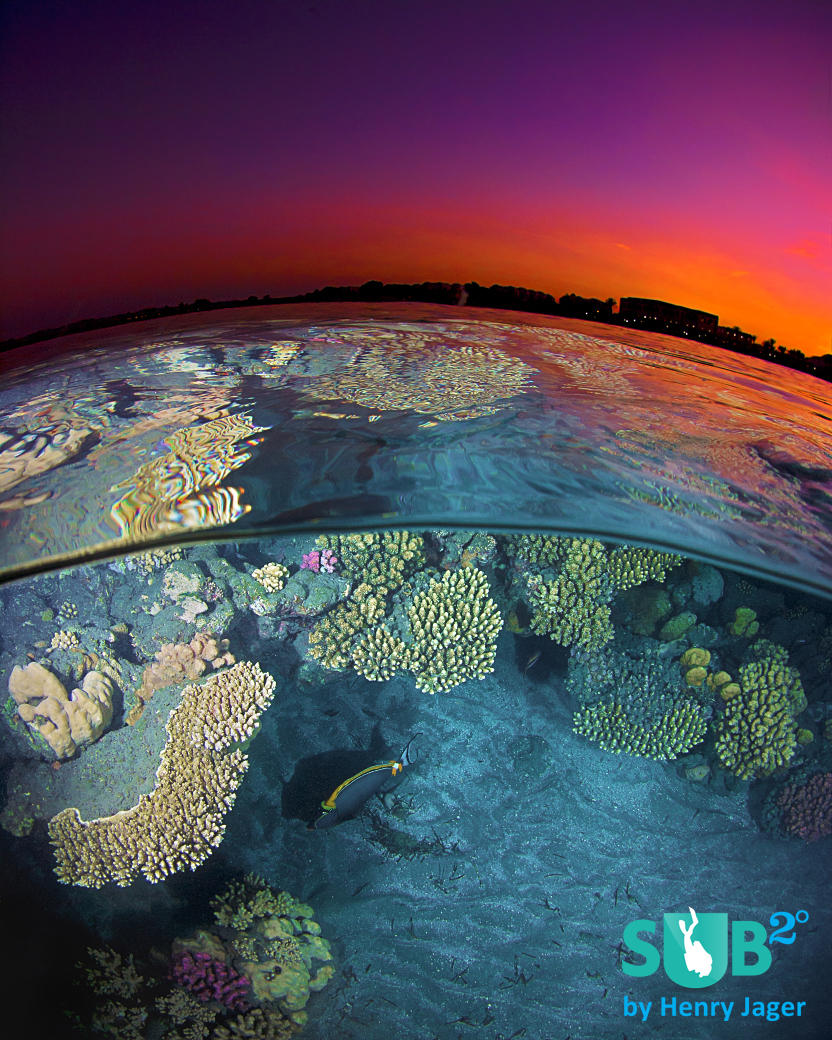
Dusk at the Red Sea Reef
A red sky in combination with the blue water: Taken shortly after the sunset at the colorful reef at the Red Sea in Egypt. -
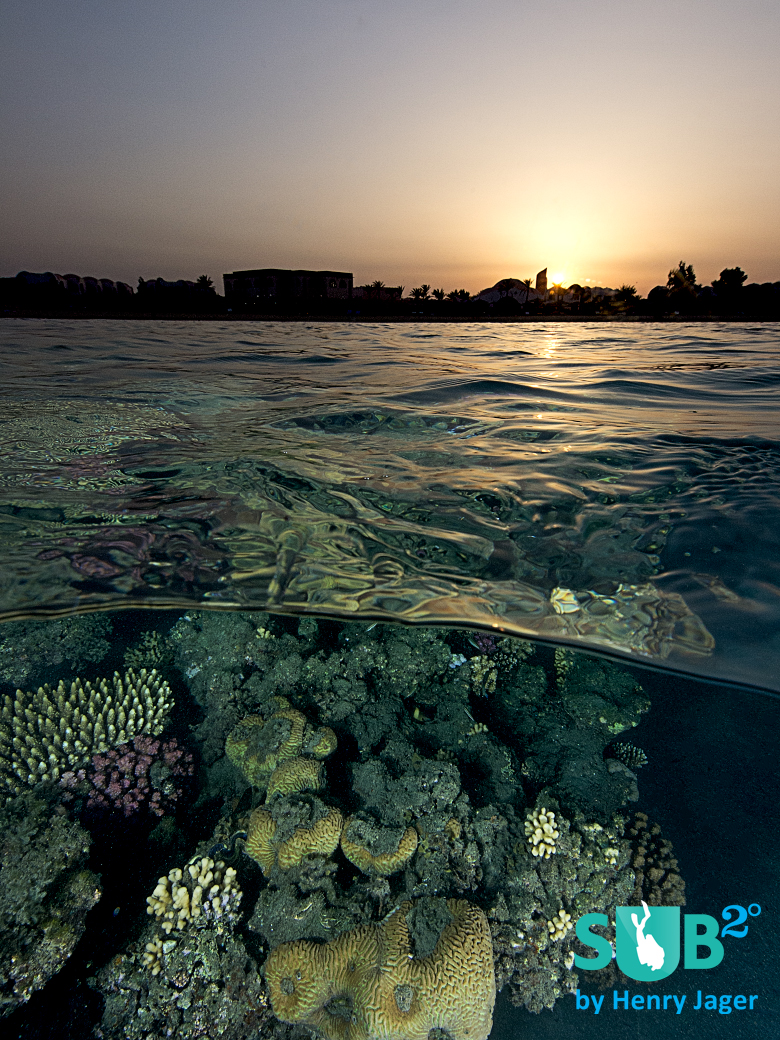
Wasi Gimal at Sunset
The golden hour: Just before the sun goes down the light starts changing. Time to take some pictures at the Wadi gimal house reef. -
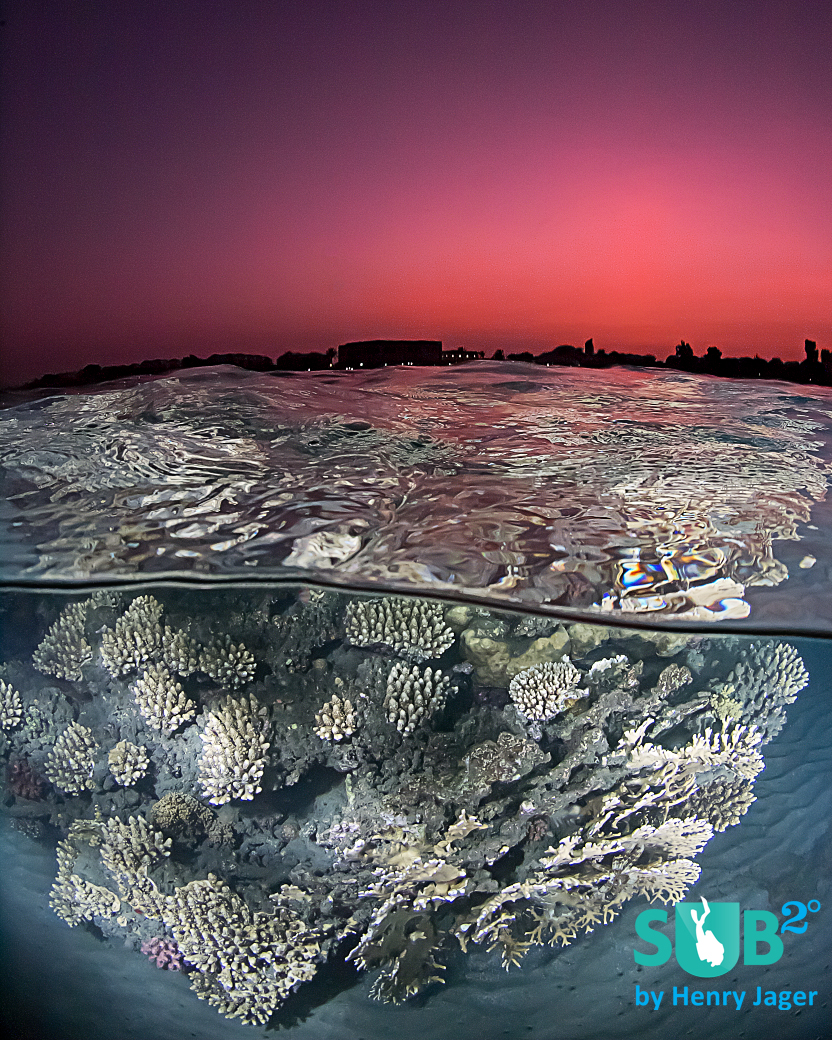
Sunset at the Red Sea Reef
Correctly just after the sunset, at dusk. The sky is getting red, a fantastic scenery occours over the Red Sea reef. -
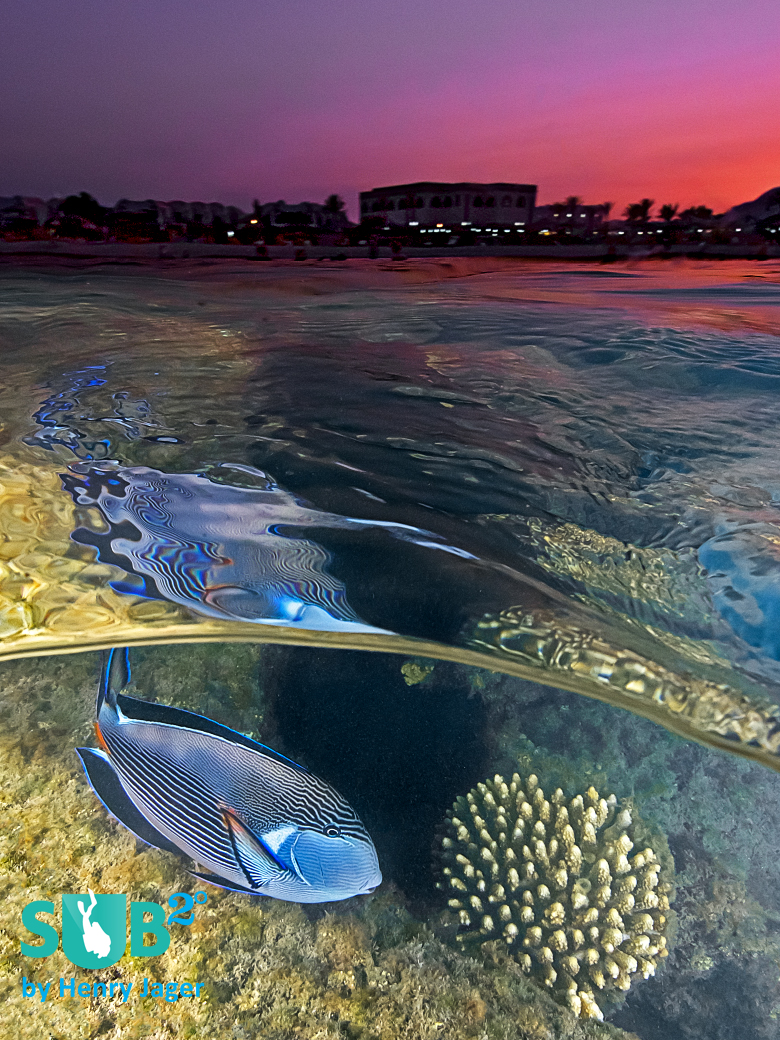
Over/Under Sunset with Doctorfish
Some fishes are still awake when dusk is over the Red Sea. -
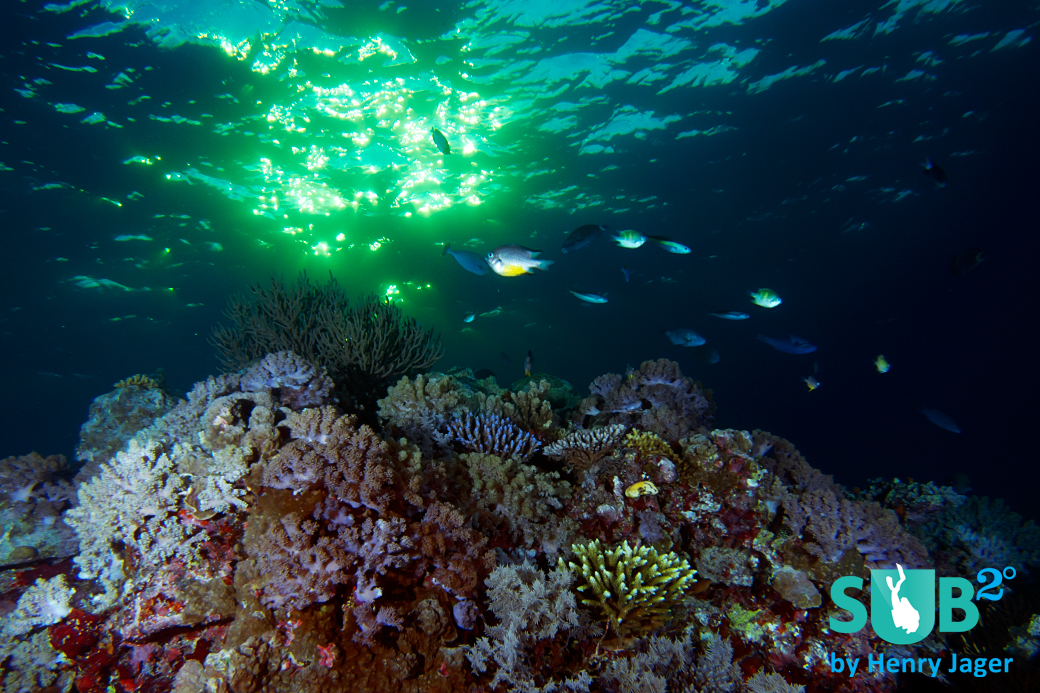
Sunset at the Apo Reef
The colour change was amazing. The sun entered through the surface in green. In green, where just before clear blue water enjoyed our eyes. The entrance points were glittering like diamonds, the reef has fallen into unreal colours.
When The Sun Goes Down
Couples are leaving their bungalows, the roof bar is preparing the Champaign, and the beach is alive again. It’s time for a beautiful, romantic sunset!
It’s obvious: sunsets over the oceans are the most beautiful sunsets in the world. Divers are enjoying them from driving to night diving; couples are taking romantic walks; and photographers are getting excited too. Starting with the so-called “golden hour“, where the light gets soft and colored, sunsets are always a great subject to take pictures of.
Underwater photographers have a special opportunity to shoot pictures: Over/under shots. We will take a closer look at them and explain how to succeed in wonderful, eye-catching shots.
Observing sunsets, we can figure out several stages of progress. Starting with the golden hour, the last hour of the visible sun, followed by the sunset, where the sun is diving into the horizon. After the sun completely disappears, we can enjoy the twilight. Photographers call this special hour “the blue hour”, which is sometimes red, at least in the beginning. The end of the twilight period is called dusk in the evening and dawn in the morning. Both are worth taking out the gear for.
The beautiful underwater scenery change at sunset
Have you ever experienced a sunset dive? No, not a night dive where you jump in just after sunset, but a dive that ends with sunset. The last 15 minutes, when the sun is very low in the sky, the light under water changes dramatically. I had the great opportunity to get surprised at the Apo Reef, a few kilometers in the west of Mindoro, Philippines.
It was not only getting darker, there was an amazing color change. The sun entered through the surface in green, where just before our eyes enjoyed clear blue water. The entrance points were glittering like diamonds; the reef had fallen into unreal colors.
By the way, watching this wonderful, calm scenery, the animals underwater changed to the opposite. Trevallies were hunting and the fusiliers were rushing along the reef like in a formula one race.
Yes taking a few pictures of this sunset scenery can't be wrong, but now we’ll have a look at something that is really unique for underwater photographers!
The very special underwater photographers sunset shot
The Red Sea is one of the greater places to perform this wonderful photography. Really, it's a dream! The reef starts only a few meters from the beach and offers its beauty over a long distance in shallow water.
A few meters, the reef runs parallel to the beach with a border seaside, so we’re able to place the reef between the spectator and the beach. The sunsets are amazing and the twilight's colors are gorgeous. It's a must for a photographer to combine these components to an eye-catching picture.
How to succeed
Over/Under shots deal with the right exposure of the under and above water part, which differ about 2-3 stops during daytime, but happily less at sunset and twilight. First we adjust the settings for the ambient light and then for the flash lit parts of the picture.
Everything, that means the camera and flashes, are controlled in manual mode. I started with the area above water, adjusting exposure: Setting shutter speed, aperture, and ISO. Then, I manually adjusted the flashes for the underwater part. To get a perfect result, you need to readjust to a compromise setting regarding depth of field and sharpness (low shutter speed).
Another issue concerns the water film on your dome port. To avoid broken water film, act fast. Observe the scenery, especially the waves, pull the camera out of the water (no hectic rush), and press the shutter in the right moment.
I heard from other photographers that they let the water film run off fast, helping by rubbing an apple- cut into half, on the dome- applying a nanotechnology sealing or just using some soap. This strategy has to be executed perfectly; otherwise you have water stains left on the dome port. But maybe it's worth a try?
To photograph this over/under shot, many components have to fit perfectly: Closeness to the beach reef; small wind to create soft waves; the tide at twilight till dusk, which provides the spot-on water level; patience and luck to shoot just the right moment, when the wave is opening the reef but not hiding the buildings.
I wish you great success in trying your next over/under shot during sunset!
Further Reading
Overview of Scuba Diving in Philippines
Overview of Scuba Diving in Egypt
Featured Posts
-
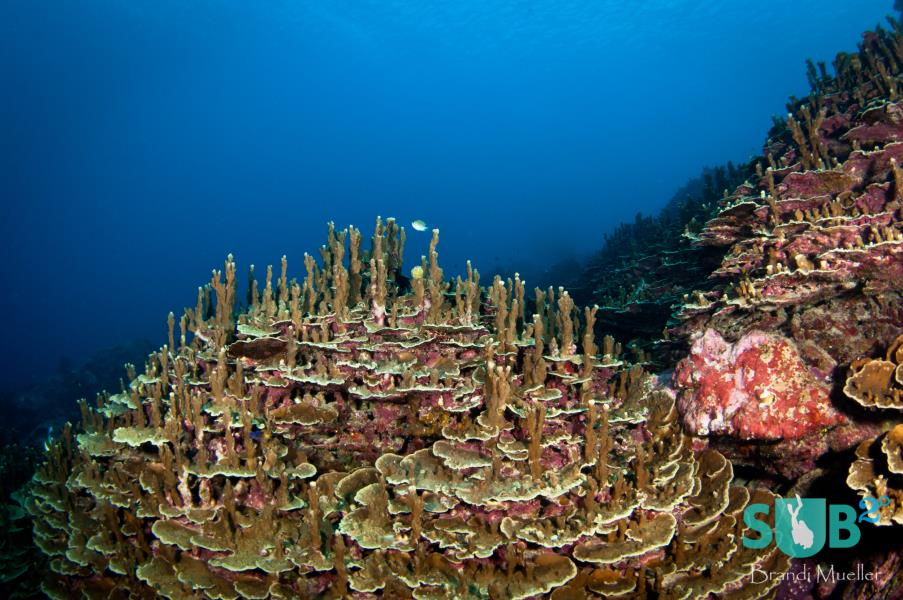
The Unique Diving of Guam
Often overlooked, the island of Guam is surrounded by fantastic diving. White sand beaches and calm, clear waters invite divers to explore the ocean and see the healthy coral and plentiful fish populations below.
-

Papua New Guinea's Milne Bay
Papua New Guinea is one of the world's best dive destinations and Milne Bay offers fantastic reef diving and muck diving in the same location. Clear waters and phenomenal creatures make for an excellent dive trip that’s enti...
-

Sharks of the Bahamas
Shark feeding dives are no longer just for the avid diver or thrill seekers. Bahama's crystal clear waters are the best environment to come nose to nose with a frenzied school of sharks after they smelled the chum.
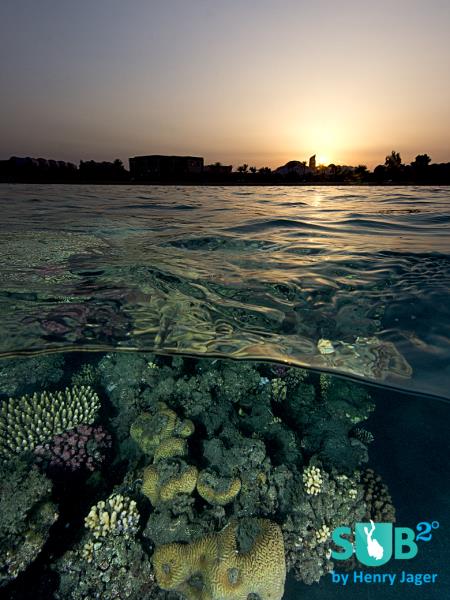
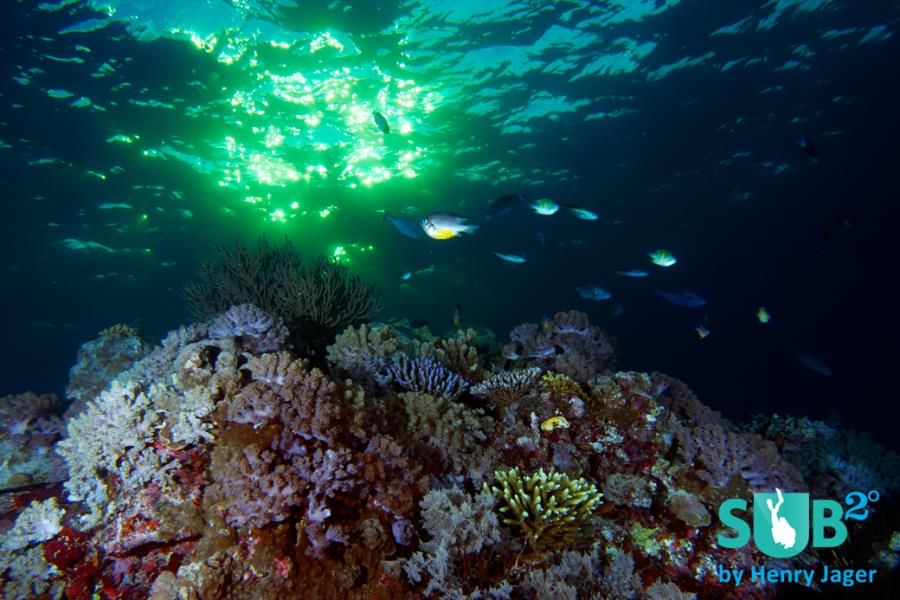
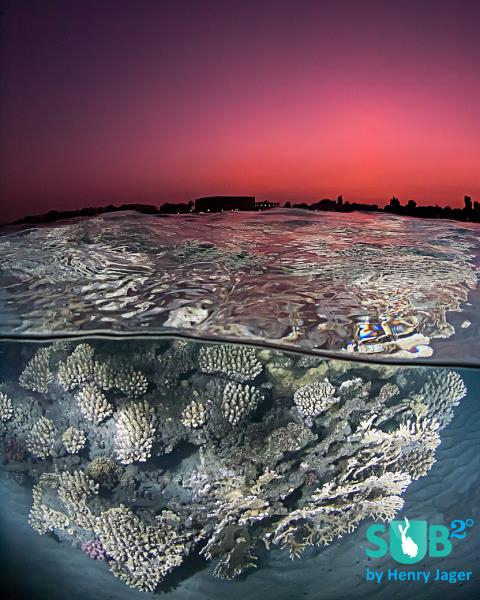
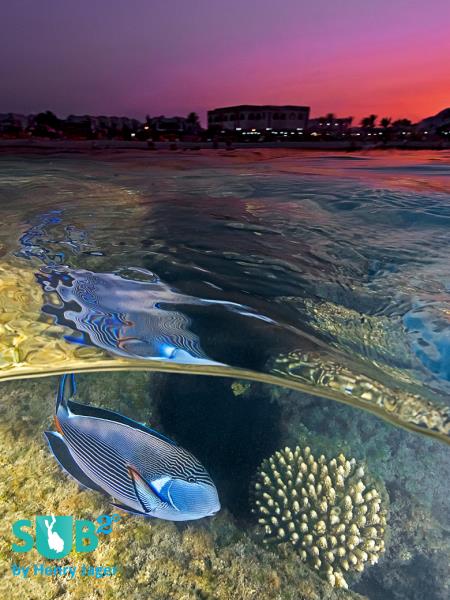


Load more comments
Timur K 5/31/2013 12:48:14 PM champaign? :)